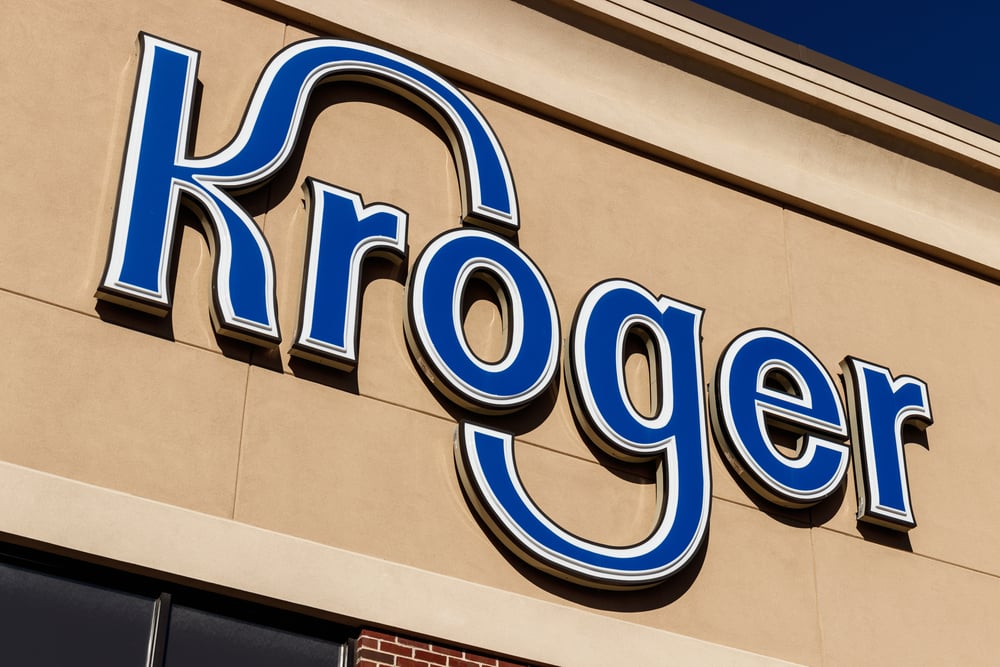
As first reported in the Wall Street Journal, the nation’s leading supermarket chain,
Kroger NYSE: KR is
scaling back on plans to renovate stores in an effort to improve same-store sales.
In an otherwise solid September earnings report, the grocer posted a 2.2% increase in same-store sales. The number is lower than competitors Walmart NYSE: WMT and Target NYSE: TGT that saw quarterly same-store sales increase by 3.4% and 4.5% respectively.
The move is an admission by Kroger management that the company’s aggressive plans to increase the company’s e-commerce presence was getting in the way of operational execution.
Among the issues being reported, the remodeled stores were causing frustration for existing employees (and if you’re like me, customers) due to the rearrangement of shelves and aisles. Plus the remodeled stores were providing expanded space for in-store pickups and online orders which added to the confusing in-store experience.
“There is a certain pace you can go at and there are only so many things you can do at one time,” Gary Millerchip, Kroger’s chief financial officer since April, said in an interview.
Too Much Too Soon
The three-year “Restock Kroger” initiative which was expected to require $9 billion of capital investment was supposed to generate $400 million of operating profit by 2020.
However, the company removed its 2020 profit guidance in September. This was an acknowledgment that the company was having execution problems. KR stock price has dropped nearly 40% since it peaked in 2015.
To that end, Kroger is re-committing to selling groceries, the area responsible for 75% of the store’s sales.
“It took us too long to do it. We put too many things on our stores to execute,” Chief Executive Rodney McMullen said in a recent interview.
Kroger Faces Trouble on Two Fronts
Kroger is finding out that being stuck in the middle does not excite investors. On the one hand, Kroger is being forced to compete on price with discount chains such as Aldi. They also face pressure from Walmart and regional superstores such as Meijer that give customers a one-stop shopping experience that appeals to time-starved families.
On the other end of the spectrum, Kroger is losing the premium end of the market to regional grocers like Publix Super Markets and Wegmans Food Markets.
Adding to the company’s plight, other grocery stores are also making an effort to attract customers. Albertsons is expecting to finish remodeling on 240 of its more than 2,260 stores in the 2019 fiscal year. The Amazon NASDAQ: AMZN effect is on full display at Whole Foods Markets where the e-commerce giant is lowering prices and putting more emphasis on local and regional products.
A Jack of all Trades but a Master of None
As part of Kroger’s three-year strategic plan, the company began selling items far afield from their core competencies including clothes and cars. Kroger initiated high-level partnerships with Alibaba NYSE: BABA and Walgreens Boots Alliance NASDAQ: WBA. But it didn’t stop there. The company is also:
- Partnering with the British retailer Ocado Group to build automated warehouses
- Testing driverless delivery in a partnership with Nuro Inc.
- Acquired Home Chef, a meal-kit company
When a company like Kroger tries to do too much too fast, it usually loses focus. And that’s what’s happened to Kroger. In addition, these new initiatives are not providing the revenue boost that management was expecting.
“You can’t get too far into focusing on the new shiny objects,” said Tory Gundelach, a former Kroger executive and a vice president at Kantar Consulting.
Kroger is Making Sure Investors Know This is Only a Pause
Kroger still has plans to refurbish their stores. But they will now at a slower pace to take into consideration the needs of regional markets. To date, the company has remodeled approximately 20% of its 2,700 stores.
The company has taken steps to reduce costs including laying off nearly 1,000 store managers and coordinators. That is only the most recent step. The company has said it has generated nearly $1 billion in annual cost savings in each of the last two years and expects to post similar savings in the fiscal year 2019. Some of those projected savings will be put towards the “Restock Kroger” initiative.
“For me, it’s learning from a big change within an organization and how do we do that more effectively going forward,” said Millerchip.
What’s Next for Kroger Stock?
In the past month, Kroger has increased its forecast for same-store sales growth to at least 2.25%. The grocery chain has also introduced a new logo along with advertisements and in-store signage that put the focus on the company’s wide offering of fresh foods and other core products.
Initially, investors are cheering the move. KR stock is up over 8% in November. The company is scheduled to report earnings in early December.
Before you make your next trade, you'll want to hear this.
MarketBeat keeps track of Wall Street's top-rated and best performing research analysts and the stocks they recommend to their clients on a daily basis.
Our team has identified the five stocks that top analysts are quietly whispering to their clients to buy now before the broader market catches on... and none of the big name stocks were on the list.
They believe these five stocks are the five best companies for investors to buy now...
See The Five Stocks Here
Discover the 10 Best High-Yield Dividend Stocks for 2025 and secure reliable income in uncertain markets. Download the report now to identify top dividend payers and avoid common yield traps.
Get This Free Report